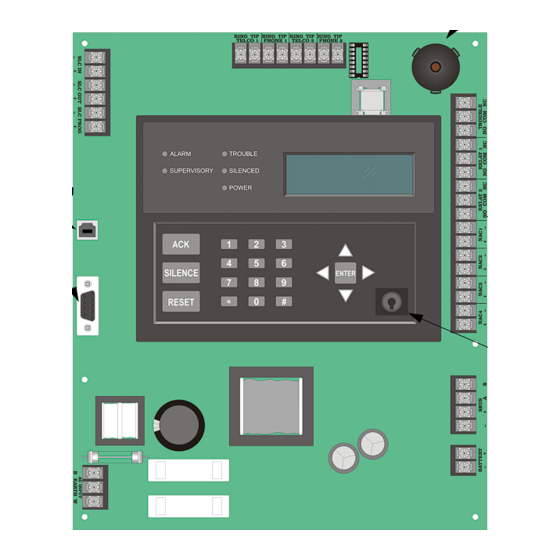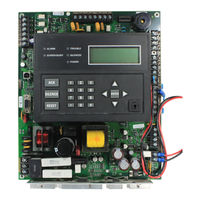
Silent Knight INTELLIKNIGHT 5808 Manuals
Manuals and User Guides for Silent Knight INTELLIKNIGHT 5808. We have 2 Silent Knight INTELLIKNIGHT 5808 manuals available for free PDF download: Installation And Operation Manual
Silent Knight INTELLIKNIGHT 5808 Installation And Operation Manual (200 pages)
Addressable Fire Control Panel
Brand: Silent Knight
|
Category: Control Panel
|
Size: 6 MB
Table of Contents
-
Section 1
13 -
Introduction
13 -
Section 2
21 -
-
Section 3
25 -
Section 4
33 -
-
SBUS Wiring38
-
-
LED Wiring51
-
-
Section 5
69 -
-
Section 6
77 -
-
-
Input Points78
-
-
-
Section 7
97 -
Programming
97-
Modules97
-
Zone100
-
Edit Zone100
-
Add Zone107
-
Delete Zone107
-
View Zone Points108
-
-
Group109
-
Point115
-
System Options121
-
-
Edit Accounts122
-
Events to Report123
-
Switch Attempts123
-
Auto Test Time124
-
Telephone Number124
-
Phone Lines125
-
Dialing Prefix125
-
Line Monitor126
-
Rotary Format126
-
-
-
Trouble Events128
-
-
-
Computer Account136
-
Access Codes138
-
-
Edit Access Code139
-
Edit Name139
-
Panel Functions139
-
-
-
Section 8
145 -
System Operation
145-
-
LCD Displays146
-
Banner146
-
-
Key Operation146
-
Menu System147
-
Using the Menus148
-
Basic Operation148
-
Reset Alarms151
-
Reset Dialer152
-
-
-
Section 9
163 -
Reporting
163 -
Section 10
167 -
Section 11
173 -
-
Limited Warranty195
-
Advertisement
SILENT KNIGHT INTELLIKNIGHT 5808 Installation And Operation Manual (182 pages)
Addressable Fire Alarm
Control Panel
Brand: SILENT KNIGHT
|
Category: Fire Alarms
|
Size: 4 MB
Table of Contents
-
Section 1
12 -
Introduction
12 -
Section 2
15 -
-
Section 3
18 -
-
Section 4
31 -
-
SBUS Wiring35
-
-
LED Wiring46
-
-
-
Section 5
63 -
-
Section 6
71 -
-
Section 7
94 -
Programming
94-
Modules94
-
Zone96
-
Edit Zone96
-
Zone Outputs99
-
Cadence Patterns101
-
Add Zone102
-
Delete Zone102
-
View Zone Points102
-
-
Group103
-
Edit Group103
-
Edit Group Name103
-
-
Add Group105
-
Delete Group105
-
-
Point107
-
System Options114
-
-
Edit Accounts114
-
Auto Test Time116
-
-
Phone Lines116
-
-
Trouble Events118
-
-
Time Options120
-
Daylight Savings122
-
SLC Family124
-
-
Computer Account124
-
Access Codes125
-
-
Edit Name127
-
Edit Access Code127
-
Panel Functions127
-
-
-
Section 8
128 -
System Operation
128-
-
LCD Displays129
-
Banner129
-
-
Key Operation129
-
Menu System130
-
Using the Menus131
-
Basic Operation131
-
Reset Alarms133
-
Reset Items135
-
Section 9
146 -
Reporting
146 -
Section 10
155 -
Section 11
160

